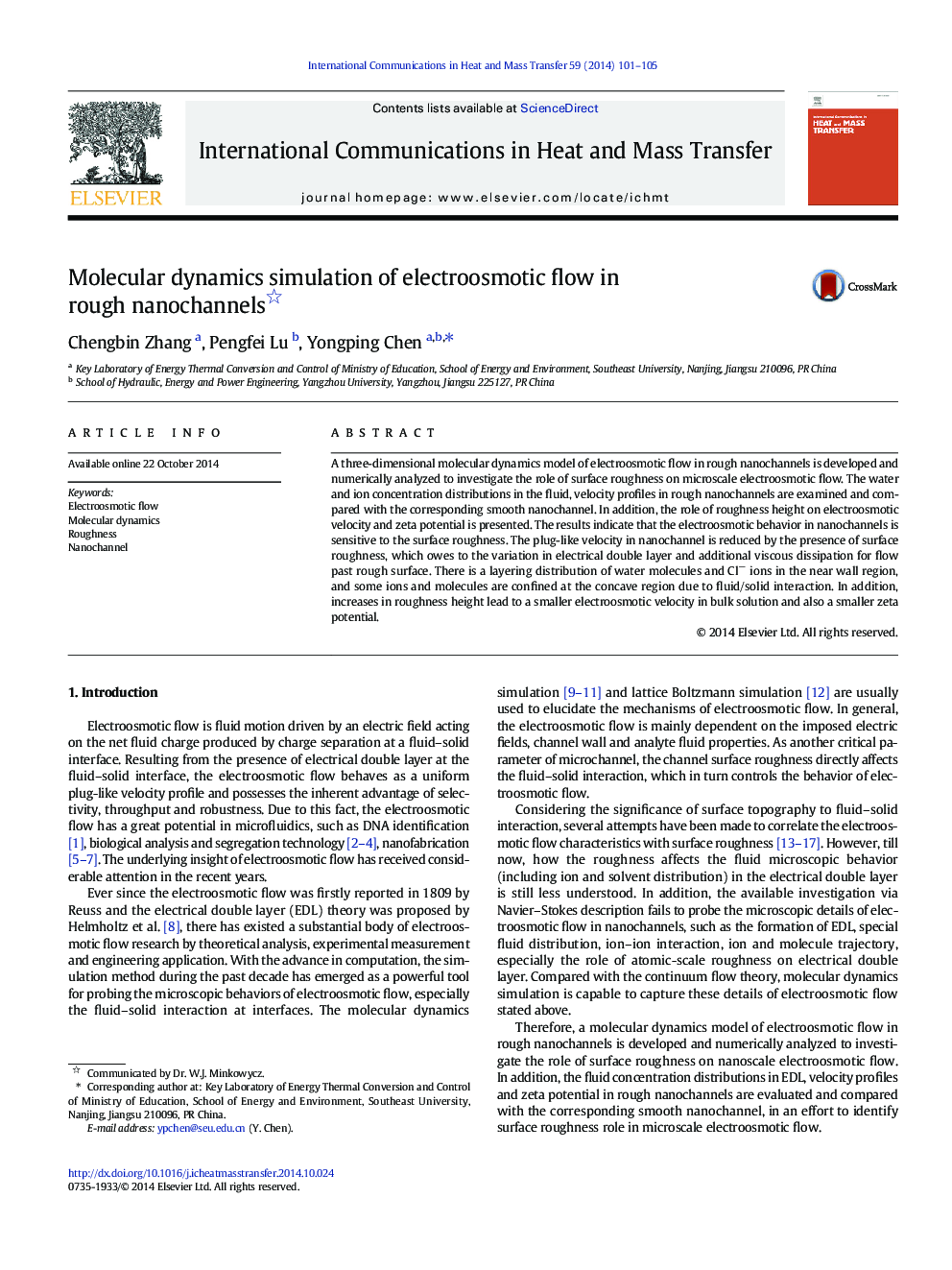| Article ID | Journal | Published Year | Pages | File Type |
|---|---|---|---|---|
| 653209 | International Communications in Heat and Mass Transfer | 2014 | 5 Pages |
Abstract
A three-dimensional molecular dynamics model of electroosmotic flow in rough nanochannels is developed and numerically analyzed to investigate the role of surface roughness on microscale electroosmotic flow. The water and ion concentration distributions in the fluid, velocity profiles in rough nanochannels are examined and compared with the corresponding smooth nanochannel. In addition, the role of roughness height on electroosmotic velocity and zeta potential is presented. The results indicate that the electroosmotic behavior in nanochannels is sensitive to the surface roughness. The plug-like velocity in nanochannel is reduced by the presence of surface roughness, which owes to the variation in electrical double layer and additional viscous dissipation for flow past rough surface. There is a layering distribution of water molecules and Clâ ions in the near wall region, and some ions and molecules are confined at the concave region due to fluid/solid interaction. In addition, increases in roughness height lead to a smaller electroosmotic velocity in bulk solution and also a smaller zeta potential.
Related Topics
Physical Sciences and Engineering
Chemical Engineering
Fluid Flow and Transfer Processes
Authors
Chengbin Zhang, Pengfei Lu, Yongping Chen,
